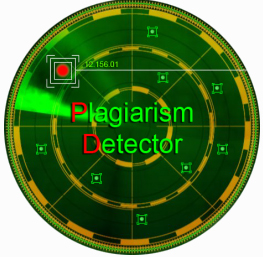- Focus and Scope
- Section Policies
- Peer Review Process
- Open Access Policy
- Publication Frequency
- Plagiarism Checker
- Publications Ethics and Malpractice Statement
- Retraction
Focus and Scope
Jurnal Informatika dan Rekayasa Perangkat Lunak (JATIKA), an Indonesian national journal, publishes high quality research papers in the broad field of Informatics and Computer Science, which encompasses software engineering, information system development, computer systems, computer network, algorithms and computation, and social impact of information and telecommunication technology.
The other fields of study that examine topics related to Software Engineering and Informatics are not limited to:- Software Engineering
- Android Developer
- Game Developer
- Web Developer
- Development of Information System
- Decision Support System
- Experts System
- Artificial Intelligence
- Big Data
- Natural Language Processing
- All topics related to Software Engineering and Informatics
Section Policies
Articles
Peer Review Process
Jurnal Informatika dan Rekayasa Perangkat Lunak (JATIKA) applies the review process policies:
- Editor will check the manuscript according to focus and scope and check the similarity index below 30%
- Every submitted paper will be reviewed by two peer reviewers
- Using blind review method
- Reviewing process will consider novelty, objectivity, method, scientific impact, conclusion, and references
- Reviewers will suggest the acceptance of article manuscripts
- Editors will decide whether the manuscripts are meeting Jurnal Informatika dan Rekayasa Perangkat Lunak (JATIKA) journal's requirement. Editors decision is final
Open Access Policy
Jurnal Informatika dan Rekayasa Perangkat Lunak (JATIKA) provides direct open access to its content on the principle of making scientific articles freely available to the public and supporting greater global knowledge exchange. By adapting The Budapest Open Access Initiative, this journal allows readers to read, download, copy, distribute, print, search for, or link to the full text of its articles and use it for other legitimate purposes. However, the works/articles in this journal are also tied to The Creative Commons Attributions-ShareAlike 4.0 International License.
Publication Frequency
JURNAL INFORMATIKA DAN REKAYASA PERANGKAT LUNAK published articles on a three-monthly basis on:
March Edition: (Number / Issue 1)
Published Journal: March 15th
June Edition: (Number / Issue 2)
Published Journal: June 15th
September Edition: (Number / Issue 3)
Published Journal: September 15th
December Edition: (Number / Issue 4)
Published Journal: December 15th
Plagiarism Checker


Publications Ethics and Malpractice Statement
- All submitted papers are subject to a strict peer-review process by reviewers that are experts in the area of the particular manuscript.
- The review process is blind peer-review.
- The factors that are taken into account in the review are relevance, soundness, significance, originality, readability, and language.
- The possible decisions include acceptance, acceptance with revisions, or rejection.
- If authors are encouraged to revise and resubmit a submission, there is no guarantee that the revised submission will be accepted.
- Rejected articles will not be re-reviewed.
- The paper acceptance is constrained by such legal requirements as shall then be in force regarding libel, copyright infringement, and plagiarism.
- No research can be included in more than one publication.
Section B: Authors’ responsibilities
- Authors must certify that their manuscripts are their original work.
- Authors must certify that the manuscript has not previously been published elsewhere.
- Authors must certify that the manuscript is not currently being considered for publication elsewhere.
- The authors must participate in the peer-review process.
- Authors are obliged to provide retractions or corrections of mistakes.
- All Authors mentioned in the paper must have significantly contributed to the research.
- The authors must state that all data in the paper are real and authentic.
- The authors must notify the Editors of any conflicts of interest.
- The authors must identify all sources used in the creation of their manuscript.
- Authors must report any errors they discover in their published paper to the Editors.
Section C: Reviewers’ responsibilities
- Reviewers should keep all information regarding papers confidential and treat them as privileged information.
- Reviews should be conducted objectively, with no personal criticism of the author.
- Reviewers should express their views clearly with supporting arguments.
- Reviewers should identify relevant published work that has not been cited by the authors.
- Reviewers should also call to the Editor in Chief’s attention any substantial similarity or overlap between the manuscript under consideration and any other published paper of which they have personal knowledge.
- Reviewers should not review manuscripts in which they have conflicts of interest resulting from competitive, collaborative, or other relationships or connections with any of the authors, companies, or institutions connected to the papers.
Section D: Editors’ responsibilities
- Editors have complete responsibility and authority to reject/accept an article.
- Editors are responsible for the contents and overall quality of the publication.
- Editors should always consider the needs of the authors and the readers when attempting to improve the publication.
- Editors should guarantee the quality of the papers and the integrity of the academic record.
- Editors should publish errata pages or make corrections when needed.
- Editors should have a clear picture of research funding sources.
- Editors should base their decisions solely one the papers’ importance, originality, clarity, and relevance to publication’s scope.
- Editors should not reverse their decisions nor overturn the ones of previous editors without serious reason.
- Editors should preserve the anonymity of reviewers.
- Editors should ensure that all research material they publish conforms to internationally accepted ethical guidelines.
- Editors should only accept a paper when reasonably certain.
- Editors should act if they suspect misconduct, whether a paper is published or unpublished, and make all reasonable attempts to persist in obtaining a resolution to the problem.
- Editors should not reject papers based on suspicions; they should have proof of misconduct.
- Editors should not allow any conflicts of interest between staff, authors, reviewers, and board members.
Retraction
he papers published in the Jurnal Informatika dan Rekayasa Perangkat Lunak will be consider to retract in the publication if :
- They have clear evidence that the findings are unreliable, either as a result of misconduct (e.g. data fabrication) or honest error (e.g. miscalculation or experimental error)
- the findings have previously been published elsewhere without proper crossreferencing, permission or justification (i.e. cases of redundant publication)
- it constitutes plagiarism
- it reports unethical research














